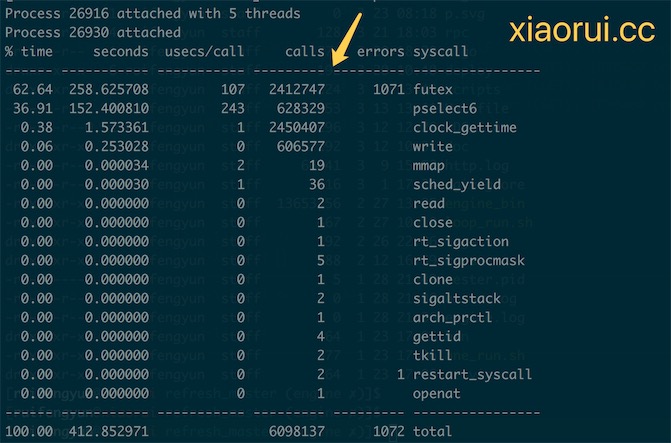前言:
有段时间没写博客了,这次写一篇水文,关于 golang log为什么加锁 ? 很水么? 对的…
有天同事跟我说,原来go log在写入的时候也有锁,我寻思不应该呀,为啥加锁呀。在我想来写个日志没必要加锁, 但事实来说不是这样的。 好多一些语言的日志模块也有加锁,比如 python logging 。 他加锁的目的在于 避免logrotate日志切割的时候,多线程发生冲突。 我们需要说明的是,单纯的写日志不需要加锁的,因为写日志采用了文件的O_APPEND模式,原子方式一直追加后面。
该文章后续仍在不断的更新修改中, 请移步到原文地址 http://xiaorui.cc/?p=5195
原因
那么golang 标准库里的log为啥加锁? 看下面的代码,我们在调用log.Print的时候,其实在调用Output。 output方法里有各种行为加锁,总结一句话,他写日志的对象是共享的,而不是每条日志分别一个Logger.buf 对象,既然不是分离的,那么要保护好buf了,要不然写串了。
# xiaorui.cc
func (l *Logger) Output(calldepth int, s string) error {
now := time.Now() // get this early.
var file string
var line int
l.mu.Lock()
defer l.mu.Unlock()
if l.flag&(Lshortfile|Llongfile) != 0 {
// Release lock while getting caller info - it's expensive.
l.mu.Unlock()
var ok bool
_, file, line, ok = runtime.Caller(calldepth)
if !ok {
file = "???"
line = 0
}
l.mu.Lock()
}
l.buf = l.buf[:0]
l.formatHeader(&l.buf, now, file, line)
l.buf = append(l.buf, s...)
if len(s) == 0 || s[len(s)-1] != '\n' {
l.buf = append(l.buf, '\n')
}
_, err := l.out.Write(l.buf)
return err
}
func (l *Logger) Printf(format string, v ...interface{}) {
l.Output(2, fmt.Sprintf(format, v...))
}
func (l *Logger) Print(v ...interface{}) { l.Output(2, fmt.Sprint(v...)) }
Logger 结构体对象
# xiaorui.cc
type Logger struct {
mu sync.Mutex // ensures atomic writes; protects the following fields
prefix string // prefix to write at beginning of each line
flag int // properties
out io.Writer // destination for output
buf []byte // for accumulating text to write
}
日志加锁操作,听起来没啥问题,但如果你的日志很疯狂输出,那么问题就来了,这么多的syscall对于性能来说很是有杀伤力。 当然,正常线上系统肯定也没人去疯狂的benchmark日志,我这边只是为了测试说明问题,syscall 是有 代价的。

下面是阿里云四核主机的cpu占用比

pprof的火焰图分析也是runtime.futex高,剩下的就是syscall Write了。


总结
没啥总结的。 只是好奇go log为啥频繁加锁而已,算是给我解除疑惑了吧。
END.


